Maths
Get insights from 6.5k questions on Maths, answered by students, alumni, and experts. You may also ask and answer any question you like about Maths
Follow Ask QuestionQuestions
Discussions
Active Users
Followers
New answer posted
6 months agoContributor-Level 10
(i) f: {1, 2, 3, 4} → {10} defined as:
f = { (1, 10), (2, 10), (3, 10), (4, 10)}
From the given definition of f, we can see that f is a many one function as: f (1) = f (2) = f (3) = f (4) = 10
∴f is not one-one.
Hence, function f does not have an inverse.
(ii) g: {5, 6, 7, 8} → {1, 2, 3, 4} defined as:
g = { (5, 4), (6, 3), (7, 4), (8, 2)}
From the given definition of g, it is seen that g is a many one function as: g (5) = g (7) = 4.
∴g is not one-one,
Hence, function g does not have an inverse.
(iii) h: {2, 3, 4, 5} → {7, 9, 11, 13} defined as:
h = { (2, 7), (3, 9), (4, 11), (5, 13)}
It is seen that
New answer posted
6 months agoContributor-Level 10
It is given that
Therefore for all
Hence, the given function f is invertible and the inverse of f is itself.
New question posted
6 months agoNew answer posted
6 months agoContributor-Level 10
52. The given equation lines are.
line 1: xcosθ-y sin θcos 2θ
⇒ xcosθ-y sin θ - kcos 2θ = 0
The perpendicular distance from origin (0,0) to line 1 is
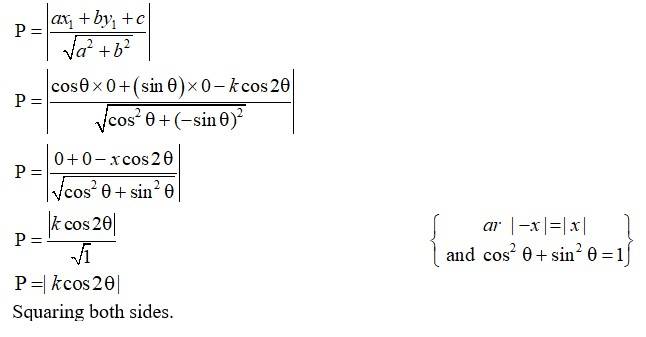
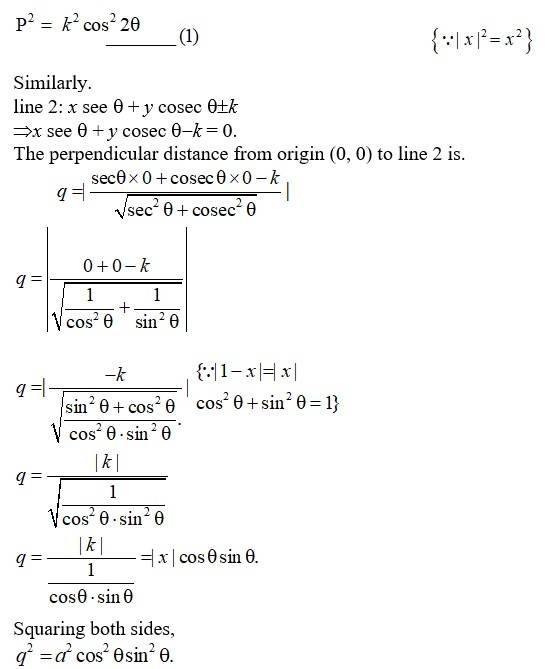
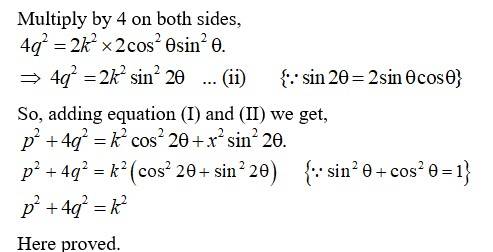
New answer posted
6 months agoContributor-Level 10
The functions f: {1, 3, 4} → {1, 2, 5} and g: {1, 2, 5} → {1, 3} are defined as
f = { (1, 2), (3, 5), (4, 1)} and g = { (1, 3), (2, 3), (5, 1)}.
gof (1) = g (f (1) = g (2) = 3 [f (1) = 2 and g (2) = 3]
gof (3) = g (f (3) = g (5) = 1 [f (3) = 5 and g (5) = 1]
gof (4) = g (f (4) = g (1) = 3 [f (4) = 1 and g (1) = 3]
gof = { (1, 3), (3, 1), (4, 3)}
New answer posted
6 months agoContributor-Level 10
51.
Let 0 (o, o) be the origin and P (-1, 2) be the given point on the line y = mx + c.
Then, slope of OP, =
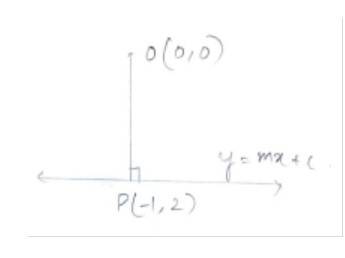
Slope of OP = -2
As the line y = mx + c is ⊥ to OP we can write
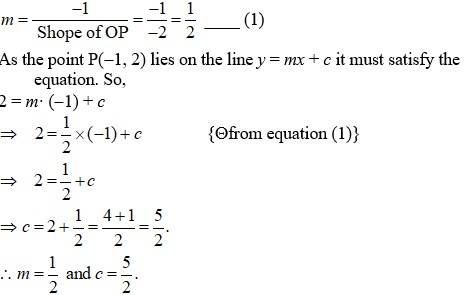
New answer posted
6 months agoContributor-Level 10
Given, defined as
For such that
So, is one-one
And for , there exist such that
is onto
Hence, option (A) is correct.
New answer posted
6 months agoContributor-Level 10
Given, defined by
For such that
or
So, is not one-one
The range of is a set of all positive real numbers which is not equal to co-domain
So, in not onto
Option (D) is correct
New answer posted
6 months agoContributor-Level 10
Given, defined by
Let such that
So, is one-one
For there exist such that
where
Thus,
is onto
Taking an Exam? Selecting a College?
Get authentic answers from experts, students and alumni that you won't find anywhere else
Sign Up on ShikshaOn Shiksha, get access to
- 65k Colleges
- 1.2k Exams
- 679k Reviews
- 1800k Answers
